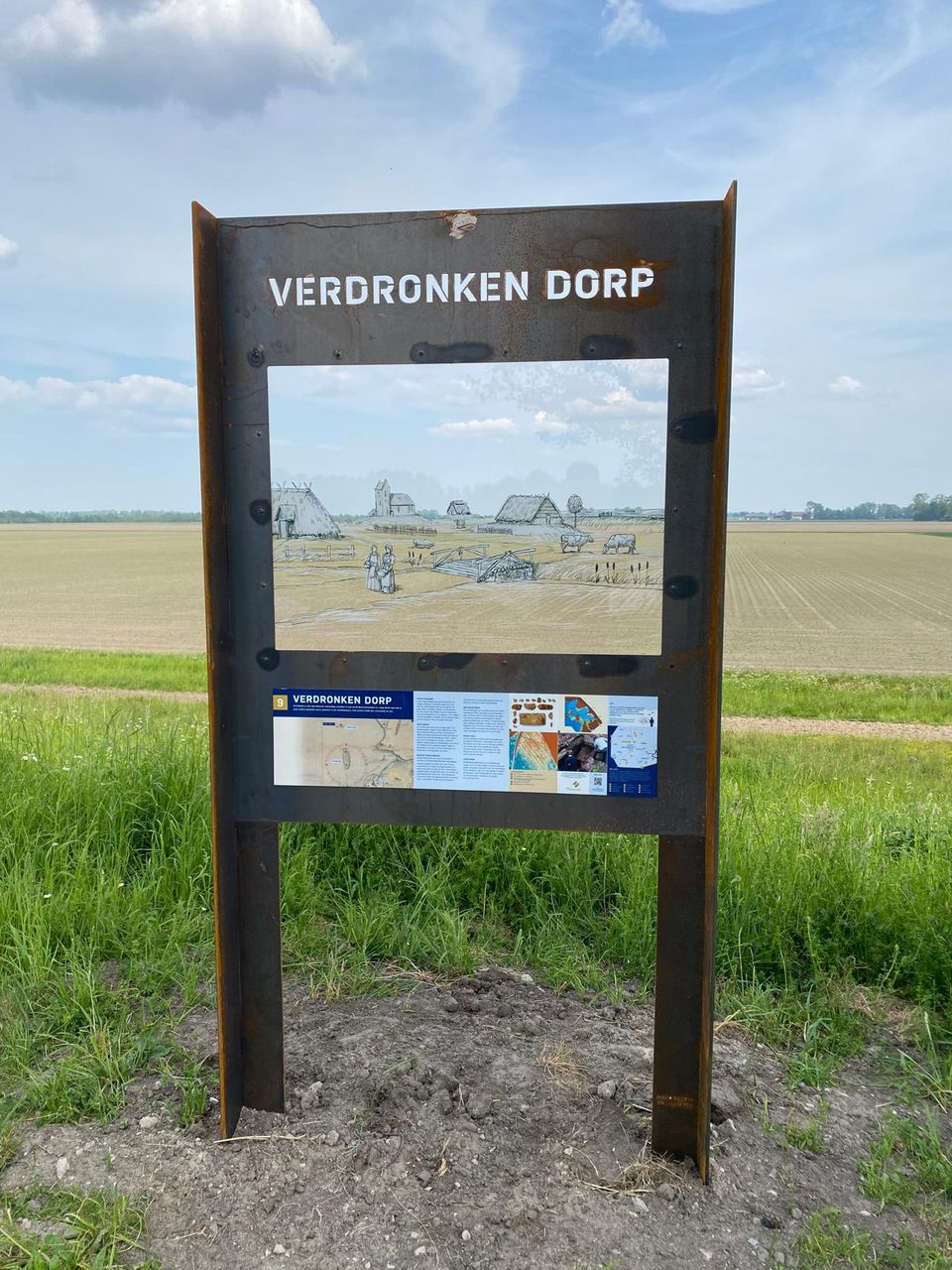
See-through panels are corten steel frames with a transparent plate. On that plate, a drawing visualises an object/activity that is not (or no longer) visible in the landscape. Through the correct perspective of the drawing and the correct positioning of the frame, the drawing is as it were projected into the current landscape. In this way, a special event or a former structure that stood at a specific location can come back to life for a while. Via the vista panels, we make the special history and unique story of Northeast Polder more visible.
The Verdronken Dorp vista panel stands next to …
See-through panels are corten steel frames with a transparent plate. On that plate, a drawing visualises an object/activity that is not (or no longer) visible in the landscape. Through the correct perspective of the drawing and the correct positioning of the frame, the drawing is as it were projected into the current landscape. In this way, a special event or a former structure that stood at a specific location can come back to life for a while. Via the vista panels, we make the special history and unique story of Northeast Polder more visible.
The Verdronken Dorp vista panel stands next to the cycle path through Wellerwaard nature reserve, accessible from Castelynsweg (near the golf club) and from Friesepad (immediately after the junction with Castelynsweg or further on via the car park of Bij Ons in de Wellerwaard). This vista panel tells the story of habitation of this area in the late Middle Ages, when there were other villages besides Urk and Schokland in an area with predominantly large lakes, marshes, islands and peninsulas. Anyone looking through the panel will see an impression of the hamlet of Fenehuysen I, one of four settlements located so far that were later swallowed by the Zuiderzee and thus drowned.